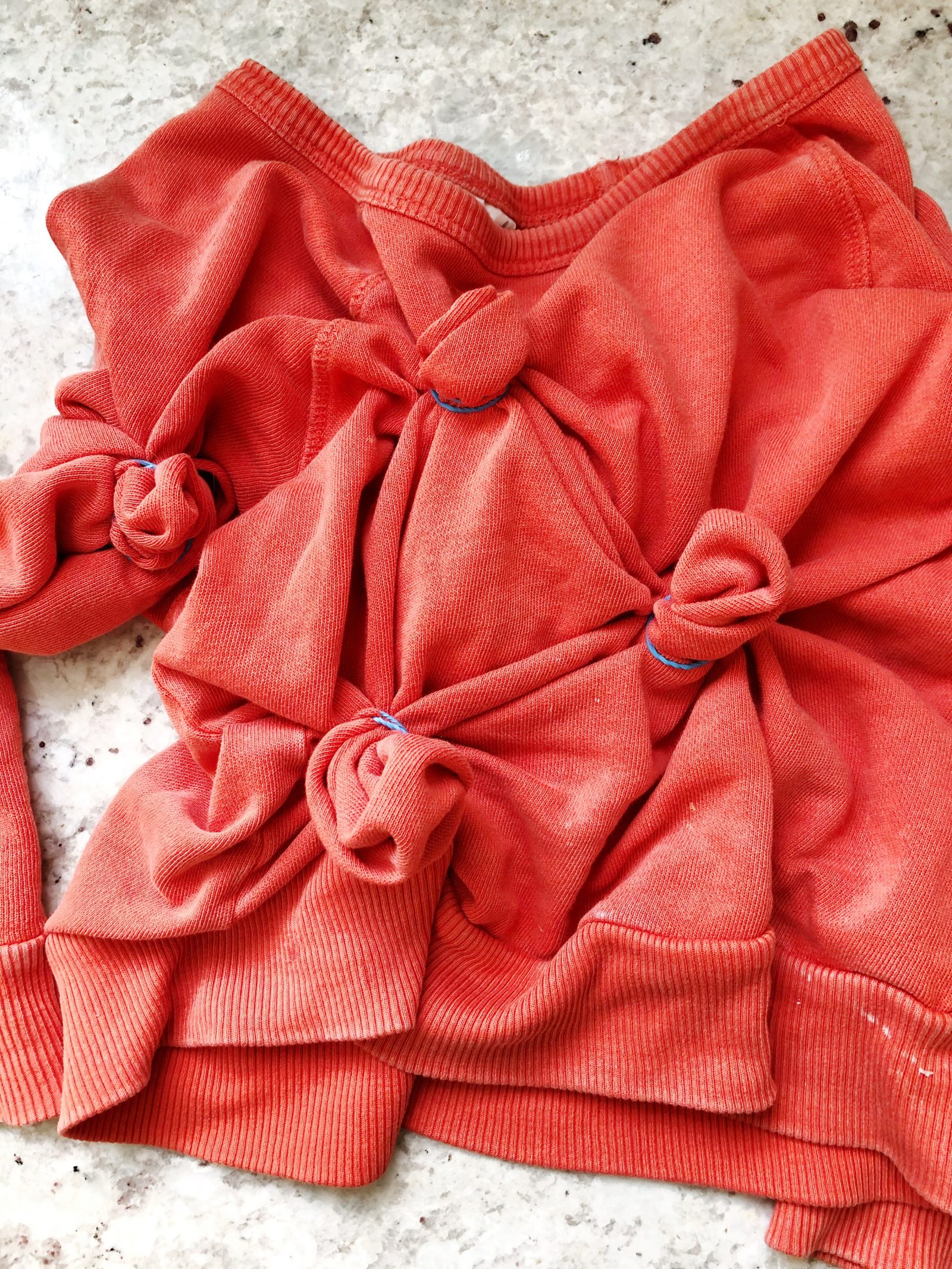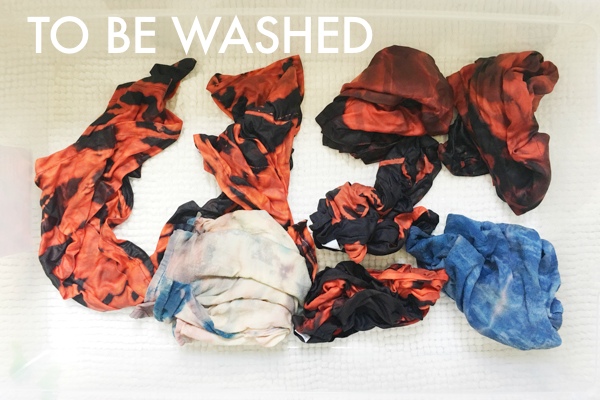
- #How to tie dye with bleach how to
- #How to tie dye with bleach free
You really never know what effect the bleach will have on various materials & colors, and that’s part of the fun! Every piece comes out a bit different, making everything one-of-a-kind, which I love.Īfter months and months of experimenting with bleach dyeing, I finally have it down, and want to share my method with you all, as I’ve gotten a ton of inquiries! Remember in college when you started doing your laundry yourself for the first time and stained your favorite t-shirt with bleach and it left a giant pink or orange spot? It’s like that…but on purpose. One of our big sellers lately has been upcycled tie-dye! We’ve experimented with different colors, but my favorite dye method by far is “reverse” dyeing with bleach. In addition to selling my art, we also take clothing that we’ve thrifted in NYC and given makeovers to (“upcycled”), giving them a second life!
Hang it out to dry – If possible, hang it out over the bath or in the bathroom, to ensure that any leaked dye doesn’t find its way to carpeted flooring.Īfter these steps, you can wash it in the machine but be sure not to wash the material on too high a temperature for the first couple of washes.If you follow along with my Instagram, you probably know that I recently started an Etsy shop! My roommate and I started WKNYC during COVID-19 lockdown, and it is still going strong–and growing. Then allow it to soak again for another 10 minutes. Wash the shirt again under cold water – But be careful not to rub it too hard otherwise you could risk rubbing off the dye. Leave it in the basin – Let the tie dyed material soak in the mixture of water and detergent for about 15 minutes. Mix in a small amount of washing detergent into the water as well. Fill the basin with warm water to set the dye – This will stop it from bleeding onto other clothes when it’s put in the washing machine next time. Rinse the material with cold water under the sink – After the dying process, you should have rinsed out the material anyway, but if not then go back to this step to be sure. #How to tie dye with bleach how to
Here’s how to wash tie dye in five simple steps… You don’t want your fresh tie-dye pattern disintegrating in the wash, or even worse, the dye moving onto other clothes. However, there comes a time when all these things have to be washed, and that’s when problems can happen. Learning how to tie dye t shirts is loads of fun and you can pretty much do it with any item of clothing – like baby grows, socks, jeans or even other materials, like towels and table cloths. The dye pattern should gradually change from white to pastel to bright dye creating a pastel ombre effect.ģ5 crafts for kids that are fun, easy and will keep them entertained
On the last dipping, the bottom 5cm of each napkin should be the deepest and darkest shade whilst the top edge should be white. Repeat, this dipping process, reducing the amount of fabric dipped into the dye every time. Remove from the dish and set aside for thirty minutes. #How to tie dye with bleach free
Dip your fabric, item of clothing, or napkins in our case, into the bucket, leaving the top edge free from dye. Make up your dye mixtures in large dishes or buckets, we’ve used Dylon’s Sunflower Yellow, Paradise Blue and Passion Pink dyes. 
However this can create a faded look to your item of clothing so, unless you want a t-shirt that looks like it’s a genuine vintage piece from back in the day, opt for an ombre pattern to make a pastel tie dye look. Then the items are ready to be washed.Īn easy way to create a pastel colour when tie dyeing is to simply dilute the dye with more warm water or to leave the dye soaking into the fabric for a shorter period of time.
Leave to soak for eight hours before rinsing in a salt water solution – 120g salt to 120ml cold water – until the water runs clear. Use this dye mixture to create any of the patterns listed above. While the clothes soak, mix eight drops of your food colouring with 120ml warm water. Mix two cups of white vinegar to two cups of warm water and soak your clothing or fabric in the mixture for one hour. Instead, use a polyester item of clothing. But, because food colouring is an acid-based dye, you need to use clothing that is NOT made from plant-based fabrics like cotton and linen. 
If you don’t have any dye at home you can also use food colouring to tie dye t-shirts. (Credit: GoodToKnow/Esme Clemo) How to tie dye t-shirts with food colouring
Child development stages: Ages 0-16 years.






 0 kommentar(er)
0 kommentar(er)
